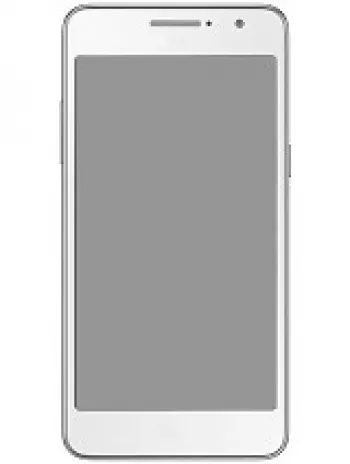
Introduction to Samsung Q105
The Samsung Q105, a relic from the early 2000s, marked a significant point in mobile phone history. Announced in 2001, this device was a feature phone era staple, targeted towards those who needed a dependable communication tool without the bells and whistles of today’s smartphones. Although discontinued now, the Q105 offers a nostalgic glimpse into mobile technology's past, showcasing a time when phones were purely tools for communication rather than the multifaceted gadgets they are today.
Network Capabilities
The Samsung Q105 was equipped with GSM technology, supporting 2G bands specifically GSM 900 and 1800. While today’s devices may boast 4G and 5G connectivity, during its time, the Q105’s GPRS Class 8 was considered sufficient for basic data transfers and voice communications. The absence of EDGE technology is notable, highlighting the era's simplistic mobile data experience focused mainly on voice calls and essential messaging.
Design and Build
In terms of design, the Q105 was compact with dimensions measuring 112 x 42 x 18.5 mm and a weight of about 85 grams. This light and portable size was ideal for users who needed to carry their phones in pockets comfortably. Made to house a Mini-SIM, the device adhered to the standards of that period. Available in a variety of colors – Blue, Dark Gray, Green, and Wine Red, it offered a selection for users to express a touch of personal style.
Display Features
The Q105 came with a grayscale graphic display capable of showing 4 shades, which was typical for phones of that era. The screen resolution was modest at 128 x 128 pixels, which allowed for display of basic graphics and text over 6 lines. This display capability was adequate for reading text messages and navigating through the phone’s menu system but limited in providing graphical output compared to modern standards.
Memory and Storage
As expected from a feature phone, the Samsung Q105 had limited storage options with no external card slot available. It could store up to 100 contacts in its phonebook, alongside call records for 10 dialed, 10 received, and 10 missed calls. These memory features reflect the device’s primary function of communication, with storage designed to prioritize essential contact information over multimedia content.
Sound and Alerts
The sound capabilities included monophonic ringtones and a vibration feature which was quite the norm at the time. Lacking a loudspeaker and a 3.5mm jack, the phone was strictly utilitarian in its audio design, focusing on communication efficacy rather than audio entertainment or enhancement.
Communication Features
Lacking modern wireless communication features, the Q105 did not support WLAN, Bluetooth, or positioning services like GPS, which are standard in today’s devices. As a consequence, the phone was limited to basic SMS messaging capabilities and accessed the internet via a WAP 1.1 browser, which could provide limited interaction with online content. The absence of radio and USB further emphasizes its focus as a direct communication device.
Additional Features
While simplistic by today’s standards, the Samsung Q105 included several useful features such as an alarm clock and the ability to play a WAP interactive game, providing users a basic level of interaction and utility outside calls and messaging. The device, however, did not support Java, meaning it was not capable of running more intricate applications or games.
Battery Life
The Samsung Q105 came with a removable Li-Ion 900 mAh battery, delivering up to 120 hours of standby time and 3.5 hours of talk time. This was complemented by an alternative slim battery option with 540 mAh, delivering 80 hours of standby time and 2 hours of talk time. These battery specs provided enough power for normal usage in an era where phones were mainly used to make short calls and texts.
Conclusion
Although the Samsung Q105 may appear extremely basic by today’s standards, it serves as a critical piece of mobile communication history. It reflects an era where mobile phones were designed to offer reliable voice communication and basic messaging. The Q105 typifies what mobile phone design and functionality meant during its time, offering a reminder of how far technology has advanced since those early days. As it stands now, devices like the Samsung Q105 remain cherished by tech enthusiasts and collectors who appreciate the evolution of mobile technology.
Key Features of Samsung Q105
- Compact Design: Dimensions of 112 x 42 x 18.5 mm and lightweight at 85g.
- Display: Grayscale graphic display with 4 shades and a resolution of 128 x 128 pixels.
- Memory: Phonebook capabilities for up to 100 contacts and call records for 10 dialed, received, and missed calls each.
- Alert Types: Supports vibration and monophonic ringtones with a composer feature.
- Battery: Available with a removable 900 mAh or slim 540 mAh Li-Ion battery, providing up to 120 hours standby and 3.5 hours talk time with the larger battery.
- Color Options: Available in Blue, Dark Gray, Green, and Wine Red.
- Basic Features: Includes SMS messaging, WAP 1.1 browser, clock, alarm, and an interactive WAP game.
Disadvantages of Samsung Q105
- Lack of EDGE technology for faster data transfer; only supports GPRS Class 8.
- Discontinued product, leading to potential challenges in finding support and accessories.
- Limited display capabilities with a Grayscale graphic, 4 shades screen.
- No memory card slot for storage expansion, with only 100 phonebook entries available.
- Absence of camera functionality.
- No loudspeaker option and lacks a 3.5mm headphone jack.
- Limited communication features, such as no WLAN, Bluetooth, or Radio.
- Minimal battery performance, with short talk and standby time compared to modern standards.
- Limited to basic SMS messaging and a primitive WAP 1.1 browser.
- No support for Java applications, limiting application expansion.
View Also
More Phones
All Rights Reserved +14266 Phones © Mobilawy 2025

























